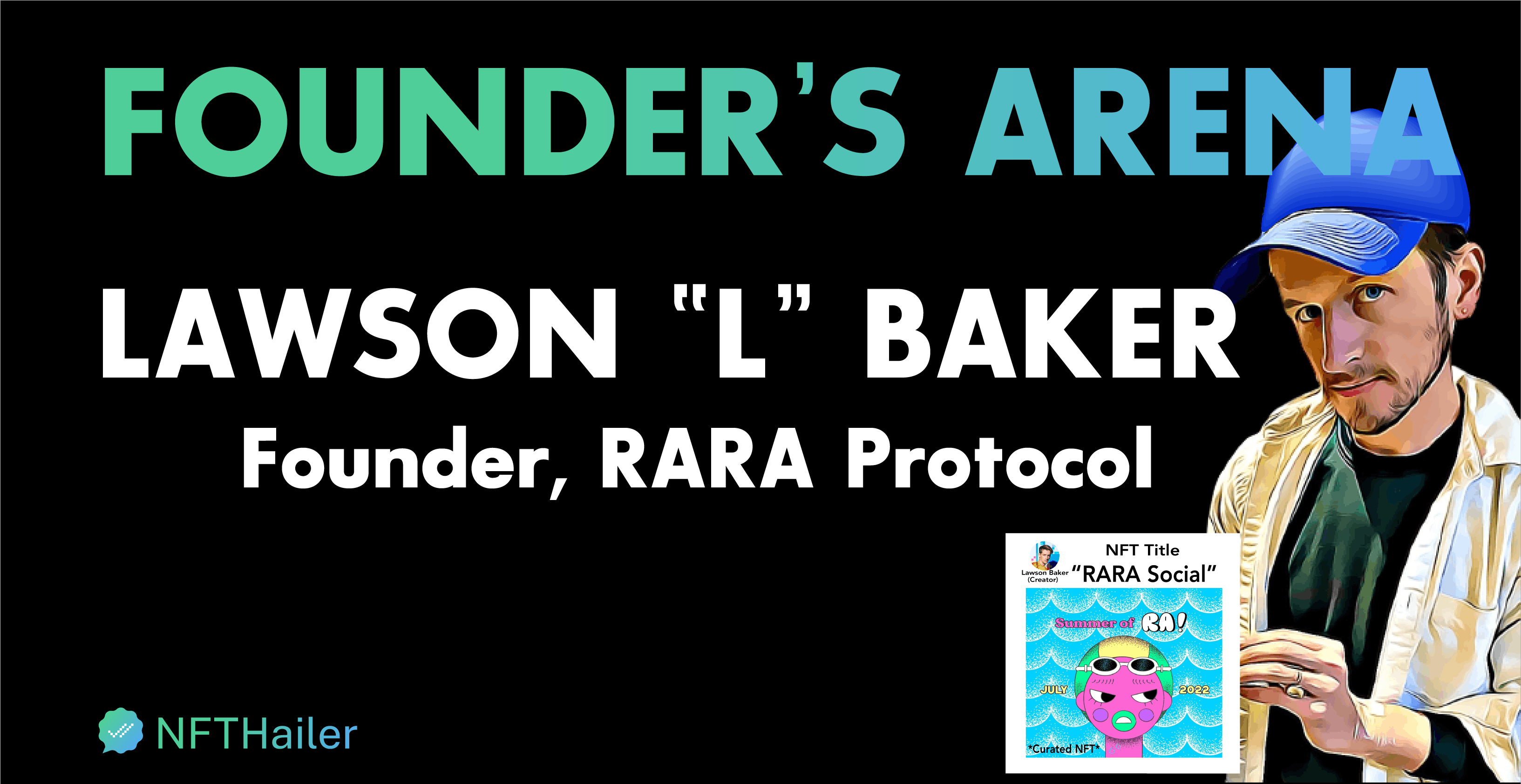RARA, a Social Curation Protocol, Launches on July 23rd

NFTs are fundamentally a social phenomenon, and that is evident in the most successful NFT collections - think Bored Apes and CryptoPunks. We’ve talked extensively about how the communal nature and engagement of NFTs are what drive success, and without this, NFTs tend to lose the spark that holds communities invested. There is still a lot of untapped potential here - and there are some who are working fundamentally disruptive mechanisms that could reshape the way we discover NFTs.
One of those platforms is RARA.social - an endeavor that calls itself the “social curation protocol for NFTs.”
We spoke to RARA's founder Lawson "L" Baker earlier this week. In this article, we give you some insight into the platform before it launches on July 23.
Making NFT Support Something to Cheer For
It’s pronounced “Rah rah! like a cheer” - RARA’s “loud paper” emphatically states, and that statement is about as good a summary of how the platform views the NFT discovery process as any. RARA is looking to make NFT discovery and support an activity that rewards active engagement with NFT collections.
It’s hard to gain the clearest picture of the RARA model without actually using it, but the best way to describe it is a protocol that rewards curators who identify NFTs that will breakout in popularity. Instead of focusing on third parties to contribute to ecosystem growth, RARA is giving end users the incentive to grow the ecosystem - and reward users for it. Essentially, it’s trying to create a value system out of social interaction which, as we mentioned, is a key part of the NFT industry.
RARA’s loud paper says that the consumers are growing more skeptical of centralized curation algorithms. The rationale behind the recommendations is not always obvious, and when it is, it begs suspicion. In creating RARA, the team wants to make good on the promise of Web3 by making all processes in the operation of an NFT marketplace transparent, decentralized and reliable. The solution it lays down is a ”permissionless and composable curation”, grounded in a social context that alongside expression-based investments will lead to communities forming around the curation process.
In other words, RARA wants to make NFT curation a social activity that rewards positive engagement, by allowing anyone to do it and rewarding them for it. Of course, the devil is in the details, and that’s where decentralized social curation gets complicated - and fun.
Making NFT Discovery Fun, Not a Chore
As it stands, the process of discovering NFTs in a manner similar to how one would find a new crypto asset: largely by searching listings, viewing metrics on data platforms, and analyzing social discussions.
Specifically, NFT owners or makers, will be able to register NFTs to sell them as “reactions.” Curators will be able to buy and burn these reactions on other NFTs, for which they receive curation tokens - and so does the NFT owner. As more reactions burn, the value of the curation token increases, and because of a rising bonding curve, early curators might receive more funds for their early support.
The end result of this system is that anyone can participate, which keeps NFTs in line with the democratic spirit of decentralized technology. It also leads to a feeling of kinship in that collectors, artists and casual enthusiasts can collectively work to support a NFT series that they appreciate - a sort of exclusive NFT party, a phenomenon which is already very popular in the space.
RARA’s Potential to Disrupt the Market
As a platform that facilitates the decentralized curation of NFT collections, RARA wields a power that could have an enormous impact on how we deal with valuations - at least in the NFT space. There is no digestible and concise way to evaluate NFT collections yet, and what RARA calls the Web3 equivalent of a like, emoji or meme is the exact quantifiable solution to that.
RARA has a lot to offer in this regard including deep mechanisms for NFT curation and the creation of reactions. Should it make good on its promise, RARA could be the spark that the NFT market needs to make it more accessible to a larger audience, while also making it fun.
Conclusion
Cheering an NFT collection on seems to be the motto that RARA is operating with, and it has a lot going for it. NFT engagement is good, but it has the potential to reach a wide swathe of individuals who are interested in what NFTs have to offer, but perhaps not cryptocurrencies in general.
NFT adoption is not fading, but it can be helped with a dollop of design and development choices that put the fans and collectors first. The next wave of NFT adoption is inevitable, and what drives it will be a focus on community-first principles.
RARA.social launches on the Polygon network on July 23rd 2022. You can learn more about it on its social channels:
Twitter | Discord | Telegram | Instagram
Corrections: Previously, we wrote that RARA involves a native token and an auction mechanism. In its pre-beta, RARA experimented with tokens and auction mechanism but it doesn't now. We have made changes to reflect this.

